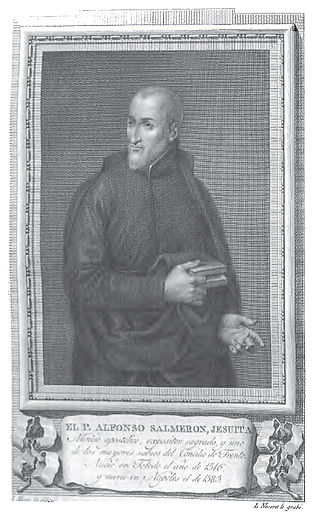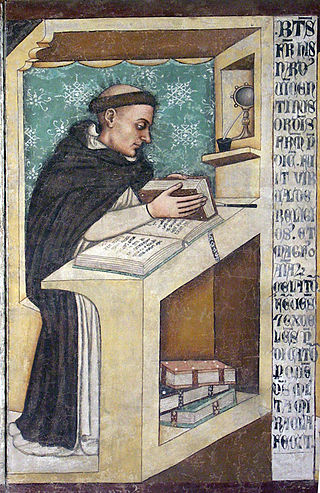Biography
His parents, noble and wealthy Brescians, were devoted adherents of the Catholic Church during the Western Schism. They gave their son a careful education and sent him, at the age of sixteen, to study civil and canon law at the University of Padua.
He entered the Dominican Order at Padua in 1419, and was speedily found to be a model of religious observance. After his ordination his zeal found fruitful expression in his eloquent preaching. He was made prior of Brescia and shortly afterwards, by appointment of the master general, prior of the convent of St. Dominic at Bologna, where he was to restore strict observance.
Amid political upheavals, when Bologna under the influence of the Bentivoglio family had revolted against papal authority, Conradin took a firm stand against them. For publishing the papal interdict, which they had incurred but which they had disregarded, he was twice seized and imprisoned. Pope Martin V, in recognition of his services, sought to create him a cardinal, but he declined.
Conradin died at Bologna in 1429 during a plague.

The Order of Preachers, also known as the Dominican Order, is a Roman Catholic mendicant order of pontifical right that was founded in France by a Castilian priest named Dominic de Guzmán. It was approved by Pope Honorius III via the papal bull Religiosam vitam on 22 December 1216. Members of the order, who are referred to as Dominicans, generally display the letters OP after their names, standing for Ordinis Praedicatorum, meaning 'of the Order of Preachers'. Membership in the order includes friars, nuns, active sisters, and lay or secular Dominicans. More recently, there has been a growing number of associates of the religious sisters who are unrelated to the tertiaries.

Pope Benedict XI, born Nicola Boccasini, was head of the Catholic Church and ruler of the Papal States from 22 October 1303 to his death, in 7 July 1304.

Pope Innocent IX, born Giovanni Antonio Facchinetti, was head of the Catholic Church and ruler of the Papal States from 29 October to 30 December 1591.

Anthony of Padua, OFM or Anthony of Lisbon was a Portuguese Catholic priest and friar of the Franciscan Order.

Peter of Verona, also known as Saint Peter Martyr and Saint Peter of Verona, was a 13th-century Italian Catholic priest. He was a Dominican friar and a celebrated preacher. He served as Inquisitor in Lombardy, was killed by an assassin, and was canonized as a Catholic saint 11 months after his death, making this the fastest canonization in history.

John of Capistrano, OFM was a Franciscan friar and Catholic priest from the Italian town of Capestrano, Abruzzo. Famous as a preacher, theologian, and inquisitor, he earned himself the nickname "the Soldier Saint" when in 1456 at age 70 he led a Crusade against the invading Ottoman Empire at the siege of Belgrade with the Hungarian military commander John Hunyadi.

Alfonso (Alphonsus) Salmerón, SJ was a Spanish biblical scholar, a Catholic priest, and one of the first Jesuits.

Antonio della Chiesa, OP was an Italian Catholic priest and member of the Dominican Order. He served as a Dominican superior was a companion of Bernardino of Siena.

Raymond of Penyafort was a Catalan Dominican friar in the 13th century, who compiled the Decretals of Gregory IX, a collection of canonical laws that remained a major part of Church law until the 1917 Code of Canon Law abrogated it. He is honored as a saint in the Catholic Church and is the patron saint of canon lawyers.

John of Wildeshausen, O.P., also called Johannes Teutonicus was a German Dominican friar, who was made bishop of Bosnia and later the fourth master general of the Dominican Order.
Pandolfo III Malatesta was an Italian condottiero and lord of Fano, a member of the famous House of Malatesta.
Bonagratia de San Giovanni in Persiceto was an Italian Friar Minor, who became Minister General of the Order.

Giovanni Dominici, OP was an Italian Catholic prelate and Dominican who became a cardinal. His ideas had a profound influence on the art of Fra Angelico who entered the order through him. But he once encountered difficulties becoming a friar due to a speech impairment that his superiors believed would rule him ineligible for both profession and the priesthood. Dominici became a noted theologian and preacher and was tireless in establishing monasteries and convents in cities such as Fiesole and Lucca.
Agostino Galamini, O.P. was an Italian cardinal and bishop.

Sebastian Maggi (1414–1496) was an Italian Roman Catholic priest and a professed member of the Dominicans. Maggi also served as the confessor to both Girolamo Savonarola and Catherine of Genoa.

Matteo da Gimara, OFM was an Italian Catholic prelate and a professed member of the Order of Friars Minor. He served as the Bishop of Agrigento from 17 September 1442 until his resignation in mid-1445. He was forced to resign due to clerical opposition to his tenure and rumors spread against him forced this resignation.

Guala de Roniis was an Italian catholic priest and a professed member of the Order of Preachers as one of Dominic of Osma's earliest disciples. De Roniis was born as a noble and was appointed as the Bishop of Brescia after Dominic's death though also served as a popular papal legate that earned him popular and papal support. He resigned from his episcopal see to dedicate the remainder of his life to peaceful solitude though his reputation for personal holiness prompted countless people to seek him out for his counsel.

Isnardo da Chiampo was an Italian Roman Catholic priest and professed member in the Order of Preachers. He studied in Bologna and in Milan before preaching in northern Italian cities such as Brescia and Bergamo following his ordination. He settled in Pavia in 1231 where he founded a convent and would remain there preaching against heretics until his death over a decade later.
Battista dei Giudici (1428/29–1484), Latinized Baptista de Iudicibus de Finario, was an Italian Dominican who served as bishop of Ventimiglia, archbishop of Amalfi and archbishop of Patras.
Filippo da Pistoia, also called Filippo Fontana or anglicized Philip, was an Italian prelate, military leader and diplomat. He was the bishop-elect of Ferrara from 1239 until 1252, bishop-elect of Florence from 1250 until 1251 and archbishop of Ravenna from 1250 until his death. He was the apostolic legate in Germany between July 1246 and March 1247, in Lombardy and the Trevigiana between December 1255 and August 1258 and throughout northern Italy between 1267 and February 1270. He served as podestà (mayor) of Ravenna in 1254.














